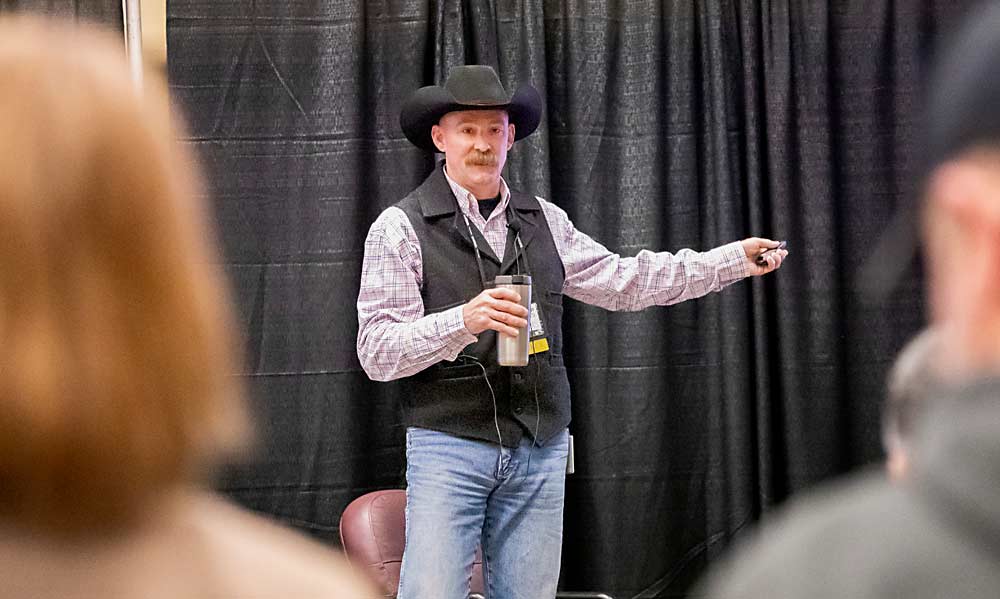
Every grower or applicator has heard the phrase, “The label is the law.”
And when the U.S. Environmental Protection Agency makes changes to pesticide label requirements to add safety measures aimed to reduce the risks of exposure, it’s critical that growers and their handlers take note.
The label requirements for products containing the herbicide paraquat dichloride were overhauled in 2021 as a result of the human health risks uncovered in a registration review conducted several years ago. The mitigation measures now adopted on the paraquat label are a remedial response to the deaths of 17 people since 2000. The deaths, three of whom were children, were attributed to accidental ingestions resulting from the illegal transfer of paraquat into beverage containers. There is no antidote for paraquat, and one sip can be lethal.
Anyone who uses a paraquat-containing product will now be affected by the mitigation measures. “Use” is defined as any of the following:
—Handling, transporting or storing opened containers.
—Mixing, loading or applying.
—Servicing and cleaning the application apparatus or any contaminated equipment.
—Handling and disposing of excess spray mix or rinsate.
—Handling unrinsed containers.
—Performing handler tasks as defined by the Worker Protection Standard (WPS).
Paraquat is a restricted-use pesticide. The sale of any restricted-use pesticide must be made to a certified applicator. However, the current paraquat label has an additional restriction: Application can only be made by licensed applicators. Previously, WPS-trained and properly equipped pesticide handlers could apply the material under the direct supervision of a licensed applicator. However, direct supervision of unlicensed applicators is no longer allowed.
To use the material, the certified applicator must also pass a label-required online training, which is the same for all paraquat-containing products. Available both in English and in Spanish, the training site is listed on the label under “Precautionary Statements — Certified Applicator Training.” The free training must be completed every three years.
Existing stocks of older material can continue to be used, consistent with the use directions on the container. If old-labeled paraquat is tank-mixed with new-labeled paraquat, the user must adhere to the new label instructions.
New requirements
We want to draw your attention to the enforceable mitigation measures on current-labeled paraquat-containing products:
—Limit aerial applications to a maximum of 350 acres per applicator per 24-hour period;
—Require a residential area drift buffer for all aerial applications (Residential areas include schools, homes, playgrounds, parks, recreational areas, athletic fields, residential lawns, gardens and other areas where children may be present.);
—Prohibit use in residential or public recreational settings, such as around homes, home gardens, schools, recreational parks, golf courses or playgrounds;
—Can never be stored in or around residential dwellings;
—Prohibit use of human flaggers;
—Prohibit pressurized handgun and backpack sprayer application methods;
—Limit the maximum application rate for alfalfa to 1 pound of paraquat cation per acre;
—Require enclosed cabs if the area treated in a 24-hour period is more than 80 acres;
—Require enclosed cabs or Protection Factor (PF) 10 respirators if the area treated in a 24-hour period is 80 acres or less;
—Require a 48-hour restricted-entry interval (REI) for all crops and uses; and
—Require mandatory spray drift management label language.
For containers less than 120 gallons, product must only be removed from the original container with a closed transfer system. (Containers with capacities greater than or equal to 120 gallons are not subject to the closed-transfer system requirement.) According to the EPA website, illegally transferring paraquat to beverage containers and later mistaking it for a drink has resulted in the accidental ingestion of the pesticide and causes approximately one to two deaths per year. Furthermore, paraquat is acutely toxic when inhaled. The closed transfer system is intended to reduce the number and severity of human health incidents caused by accidental ingestion and to mitigate dermal exposure risks for pesticide handlers when mixing and loading non-bulk paraquat products.
Currently, only Syngenta will provide the 2.5-gallon packaging as Gramoxone SL 3.0. The container will have a permanently installed valve mounted to the opening, which cannot be removed or opened by hand. To transfer product, the valve must be connected to an adapter which will attach to the inductor system or the spray tank. The adapters are being provided by agricultural chemical suppliers at the time of sale. Once empty, the container can be rinsed using the tank adapter’s threaded water line fitting.
Whether a mixer/loader or an applicator, the label requires the use of protective eyewear and a NIOSH-approved particulate respirator with any N, R or P filter. If a filtering facepiece respirator (commonly known as a disposable respirator, because its parts are not replaceable) is worn, the wearer must still be medically evaluated to assess physical condition, effectively trained on respirator use and fit-tested prior to use.
Should you have questions or desire additional information about paraquat dichloride labeling specifically or about pesticide laws and rules in general, please contact the WSDA Pesticide Compliance Program by calling: 360-902-2040 (toll free: 877-301-4555) or email: pcompliance@agr.wa.gov.
—by Christopher Sutherland and Tom Hoffmann, Washington State Department of Agriculture
Christopher Sutherland is a Washington State Department of Agriculture pesticide compliance inspector based in Yakima, and Tom Hoffmann is the area manager for the agency’s pesticide compliance division based in Moses Lake.






Leave A Comment